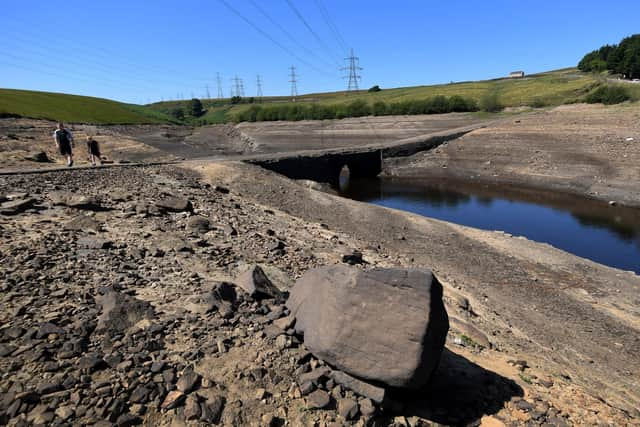Yorkshire warned drought could continue into next year
and live on Freeview channel 276
It is one of 11 areas of England that remain in drought, after the country recorded the driest eight-month spell since 1976.
Yorkshire Water has revealed its reservoir water supply fell to below 40 per cent in August, as parts of the county saw the lowest rainfall since records began more than 130 years ago, and its hosepipe ban could remain in place “well into 2023”.
Advertisement
Hide AdAdvertisement
Hide AdThe Environment Agency met with water companies earlier this week to discuss the drought and concluded that water supplies are currently safe.


But it found that total reservoir stocks have dropped to 52 per cent and all areas of England have seen below-average rainfall in September, so there has been a “limited positive impact”.
According to the Government agency, it will take longer to replenish groundwater and reservoir water levels because the soil is extremely dry and the drought will continue into next year without average rainfall over the autumn and winter months.
It has been granted a drought order for Holme Styes reservoir in West Yorkshire and applied for another order in Elslack Reservoir near Skipton.
Advertisement
Hide AdAdvertisement
Hide AdThe orders are designed to limit the amount of water Yorkshire Water can extract from the reservoirs and protect supplies.
To bolster its dwindling supply, the company has applied for permission to take more water from the River Ouse.
Environment Agency spokesman Richard Maxted said: “Although there has been some rain in recent weeks, reservoir levels in Yorkshire remain very low and the coming months may see lower than average rainfall.
“It is not enough to make any significant difference to river levels and flows in some areas across the region.
Advertisement
Hide AdAdvertisement
Hide Ad“A drought order enables us to reduce the flow from the reservoir to protect habitats and wildlife. Without it, the reservoir could run dry and wildlife and the environment will suffer."
David Dangerfield, Environment Agency Director of Water, said the country “must continue to manage water wisely”.
“Water pressures on agriculture, wildlife and the environment remain high as we head into the autumn and winter,” he said.
“For this year - and indeed the coming decade - significant action must be taken if we are to mitigate the impacts of climate change on our water security. The past summer has been a clear reminder of the need to effectively prepare for weather extremes.”